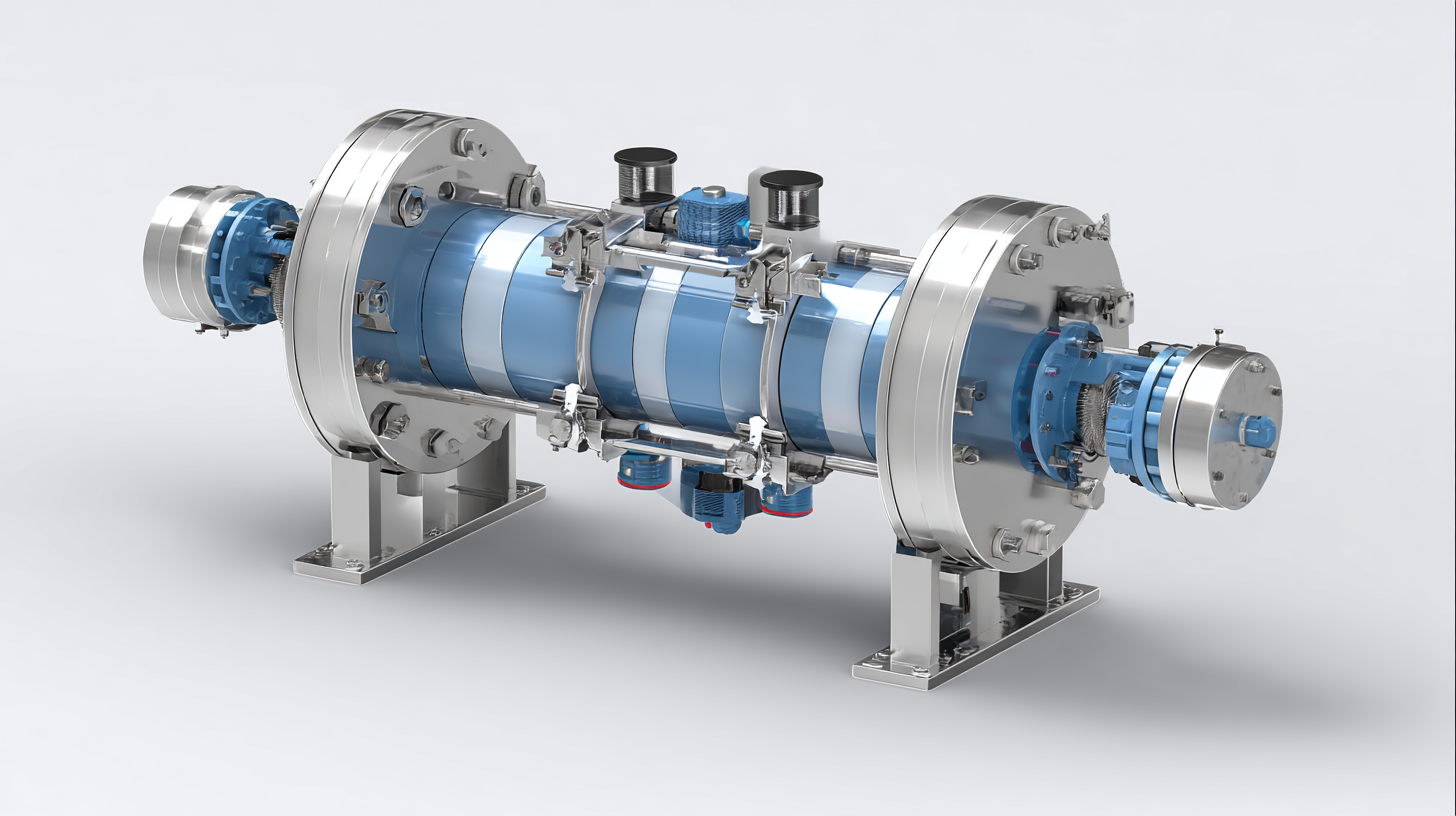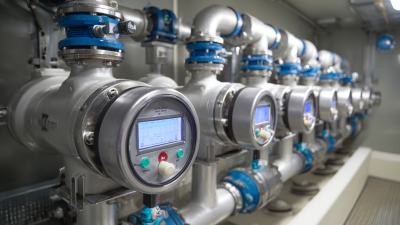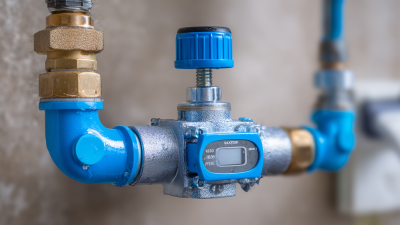2025 Top Paddle Wheel Flow Meter: Innovative Solutions for Accurate Flow Measurement
In the realm of fluid measurement technology, the Paddle Wheel Flow Meter has gained significant traction due to its reliability and accuracy in various industrial applications. According to a recent market analysis by Global Market Insights, the flow meter market is projected to exceed $7 billion by 2025, driven by the increasing demand for precise flow measurement in sectors such as water management, chemical processing, and food and beverage production. The Paddle Wheel Flow Meter, with its simple design and ability to deliver real-time data, stands out as a preferred choice for many engineers and operators.

Innovative advancements in the design and functionality of Paddle Wheel Flow Meters have further established their position in the market, as highlighted by a report from Technavio, which illustrates a growing trend toward automation and smart monitoring solutions. These innovations not only enhance measurement accuracy but also reduce maintenance costs and improve operational efficiency. As industries strive for greater sustainability and environmental compliance, adopting cutting-edge flow measurement solutions will be essential for meeting regulatory standards and optimizing resource management. Thus, understanding the technological evolution and applications of Paddle Wheel Flow Meters is crucial for industries looking to stay competitive in 2025 and beyond.
Types of Paddle Wheel Flow Meters for Diverse Applications
The paddle wheel flow meter has emerged as a versatile solution for numerous industrial applications, thanks to its ability to provide precise flow measurement across a variety of media. As detailed in the "2022 Market Analysis Report" by Flow Measurement Technologies, the demand for paddle wheel flow meters has escalated, particularly in water management, chemical processing, and HVAC sectors. These meters are capable of handling different types of fluids, including clean water, wastewater, and viscous materials, illustrating their adaptability in diverse settings.
There are several types of paddle wheel flow meters available, designed to meet specific environmental and operational needs. For instance, electromagnetic flow meters are favorable in applications requiring non-invasive measurement, while turbine flow meters can offer higher accuracy in low-flow conditions. Additionally, the recent development of wireless paddle wheel meters allows for real-time monitoring and data analysis, significantly improving operational efficiency. According to a report by the International Flow Measurement Association, advancements in sensor technology have increased the accuracy of paddle wheel flow meters to within 0.5% of the actual flow rate, further validating their efficacy across various applications.
2025 Top Paddle Wheel Flow Meter: Flow Measurement Accuracy Comparison
Key Features and Innovations in 2025 Paddle Wheel Flow Meters
 The 2025 Paddle Wheel Flow Meters are set to revolutionize flow measurement, integrating several key innovations that enhance accuracy and reliability. With the increasing demand for precise metering in various industries, these flow meters are equipped with advanced features such as enhanced sensor technology that ensures real-time data collection and minimizes errors. The incorporation of smart technology allows for seamless integration with existing monitoring systems, enabling users to access vital information promptly.
The 2025 Paddle Wheel Flow Meters are set to revolutionize flow measurement, integrating several key innovations that enhance accuracy and reliability. With the increasing demand for precise metering in various industries, these flow meters are equipped with advanced features such as enhanced sensor technology that ensures real-time data collection and minimizes errors. The incorporation of smart technology allows for seamless integration with existing monitoring systems, enabling users to access vital information promptly.
Another notable advancement is the design improvements targeting ease of maintenance and user-friendly operation. These meters often feature modular components that simplify repairs and replacements, reducing downtime and operational costs. Additionally, the introduction of digital interfaces streamlines data logging and analysis, empowering operators to make informed decisions quickly.
As industries continue to seek efficient and reliable flow measurement solutions, the 2025 Paddle Wheel Flow Meters are positioned as a leading option, combining innovation with practicality.
Comparative Analysis of Paddle Wheel Flow Meter Technologies
The paddle wheel flow meter technology has evolved significantly, offering various innovative solutions for accurate flow measurement. One of the main advantages of this technology is its ability to provide real-time data, making it ideal for applications in various industries, including water treatment and chemical processing. Paddle wheel flow meters operate on the principle of inducing a rotational movement in a paddle placed in the flow, converting the mechanical motion into an electrical signal that accurately reflects the flow rate.

Comparative analyses of different paddle wheel flow meter technologies reveal key differences in performance, sensitivity, and installation requirements. For instance, electromagnetic paddle wheel meters tend to exhibit higher accuracy and can be used in a wider range of fluids, including those with varying conductivity. In contrast, traditional mechanical paddle wheel meters may offer simpler installation but can be susceptible to wear and tear, affecting their long-term reliability. Understanding these differences is crucial for selecting the most suitable flow measurement technology tailored to specific operational needs and conditions.
Benefits of Using Paddle Wheel Flow Meters for Accurate Measurements
Paddle wheel flow meters have gained significant recognition in various industries due to their accuracy and reliability in measuring fluid flow. According to a report by the Flow Measurement Institute, paddle wheel flow meters offer an accuracy range of ±1% of reading, which is superior compared to traditional flow measurement devices. This high level of precision is essential in applications such as water treatment, chemical processing, and HVAC systems, where even minor discrepancies can lead to substantial economic implications.
One of the key benefits of utilizing paddle wheel flow meters is their ability to operate across a wide range of flow conditions. The American Society of Mechanical Engineers (ASME) highlights that these devices maintain their accuracy in varying flow rates and fluid viscosities, making them incredibly versatile. Furthermore, their simple construction and minimal maintenance requirements contribute to lower operational costs over time. With advancements in technology, the latest models are now equipped with digital displays and communication capabilities, allowing for real-time monitoring and data logging, ensuring that industries can achieve optimal operational efficiency.
Future Trends in Paddle Wheel Flow Meter Design and Functionality
The future of paddle wheel flow meter design is poised for significant innovations that enhance accuracy and usability. With advancements in sensor technology, these devices will increasingly integrate smart features, such as real-time data analytics and predictive maintenance alerts. This shift will enable users to monitor flow conditions more precisely, reducing downtime and improving operational efficiency.
Moreover, the incorporation of IoT (Internet of Things) capabilities will transform how flow meters communicate and integrate with overall systems. By enabling seamless connectivity, these flow meters will provide comprehensive insights and allow for automated control adjustments. This trend not only improves measurement accuracy but also supports the growing demand for smart manufacturing and resource management, paving the way for more sustainable practices in various industries.
The evolving materials used in paddle wheel flow meter construction will further enhance their performance in challenging environments. With the introduction of advanced composites and coatings, these meters will see improved durability and resistance to corrosion, thereby extending their lifespan and reliability in the field. As these innovations take shape, they will redefine the standards of flow measurement, making paddle wheel flow meters more adaptable and efficient across various applications.
2025 Top Paddle Wheel Flow Meter: Innovative Solutions for Accurate Flow Measurement
| Model | Accuracy (%) | Flow Range (m³/h) | Material | Connection Type |
|---|---|---|---|---|
| PW-1000 | ±1.5 | 0.5 - 100 | 304 SS | NPT |
| PW-2000 | ±1.0 | 1.0 - 150 | PVC | Flanged |
| PW-3000 | ±0.5 | 0.2 - 200 | PTFE | BSP |
| PW-4000 | ±0.2 | 0.1 - 50 | Aluminum | Tri-clamp |
Related Posts
-

How to Choose the Right Paddle Wheel Flow Meter for Your Industrial Applications
-

Ultimate Guide to Understanding Gas Flow Meter Variations for Optimal Selection
-

Understanding the Role of Water Flow Sensors in Smart Home Technology
-

The Ultimate Guide to Understanding Flow Meters and Their Impact on Industrial Efficiency
-

How to Choose the Right Inline Flow Meter for Your Industrial Applications
-

7 Best Flow Meter Types for Accurate Measurement in 2023
